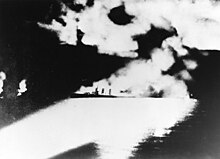 With all of the different lighting technologies available today, it’s no wonder that the average consumer finds themselves confused and unsure of which option is the best for their certain application. Furthermore, with prices encompassing such a large range, many homeowners have no Electrical Technology Degree Salary idea which bulbs will bring about the best return on their investment. In order to help prevent this confusion, it is important to do a little research and learn about the different types of lights that are available. This includes options such as Halogen, LED, CFL and Incandescent.
With all of the different lighting technologies available today, it’s no wonder that the average consumer finds themselves confused and unsure of which option is the best for their certain application. Furthermore, with prices encompassing such a large range, many homeowners have no Electrical Technology Degree Salary idea which bulbs will bring about the best return on their investment. In order to help prevent this confusion, it is important to do a little research and learn about the different types of lights that are available. This includes options such as Halogen, LED, CFL and Incandescent.
There are a variety of different types of bulbs. The type of bulb that most people are familiar with seeing is called a filament. In order to generate light, current is passed through a small piece of wire, making it glow. This is accomplished by placing the filament in an environment with no oxygen, preventing the filament from setting on fire and burning itself out. The downside of this type of bulb is that most of the energy is converted into heat, rather than light. This is not only inefficient, but dangerous of not used properly.
Halogen bulbs are similar, except that the bulb is made up of a very small cylinder that is placed within the outer glass casing. This capsule is filled with a halogen gas, which is an inert compound. As a result, halogen bulbs are designed to emit less heat than standard incandescent filament bulbs. That being said, they are not nearly as efficient as newer CFL and LED technologies.
A compact fluorescent light bulb works by passing an electrical current through a fluorescent gas. The gas lights up as a result of this current. The result is a well-distributed light that is less likely to be harsh on your eyes. Instead, CFLs produce a pleasant glow that is available in a variety of shades and brightness, depending on your needs. One complaint about CFLs is that they can sometimes take a minute to turn on, or flicker when first turned on. This does not overshadow their prowess as a low energy consumer, however. CFL bulbs are roughly eighty percent more efficient than their traditional incandescent counterparts.
Although CFLs are substantially more efficient than the incandescent bulbs of the past, LEDs are far more efficient than even the highest quality CFL. Although they had been employed primarily in electronic devices in the past, LEDs are starting to make their way into our homes as well. With an efficiency gain of nearly 90%, an LED bulb uses much less energy than any of the other options that we have Problems Electricians To Face talked about in this article. This means that replacing all of the bulbs in your home with high quality LEDs can significantly reduce your lighting costs. Furthermore, LED bulbs have an incredibly long lifespan, with some lasting up to 100,000 hours. This means that your bulbs not only use less energy, but require less frequent replacement. These benefits typically outweigh the higher cost up front.
